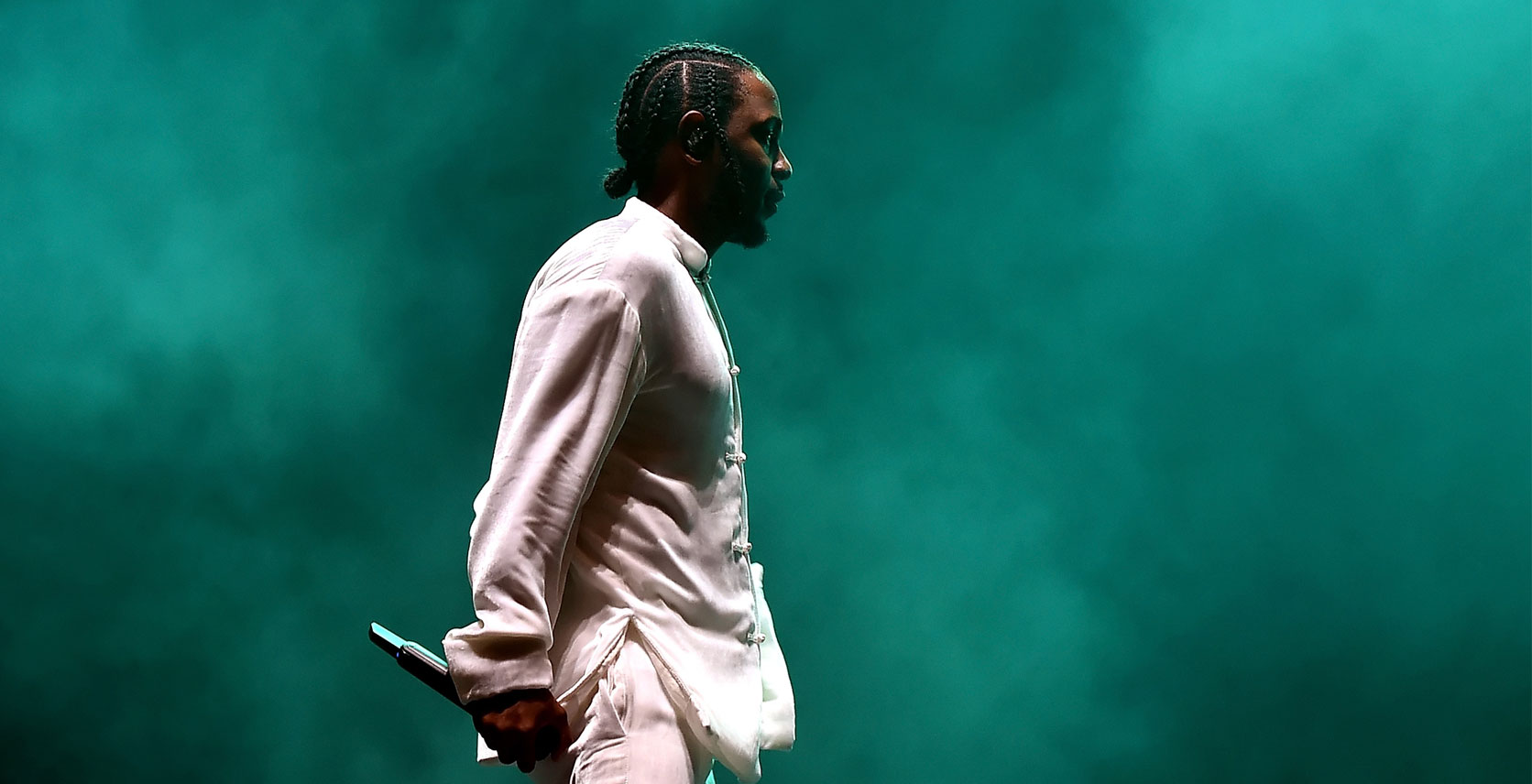With ‘Damn,’ Kendrick Lamar Becomes More Philosopher Than Showman
Kendrick Lamar is back, and he got a bone to pick. Several of them, actually. His new album Damn, which dropped on Friday, is, in a word, critical: of some expected targets, like haters, Fox News, and Donald Trump, but also of Kendrick’s own history, his talent, himself.
I mean “critical” in the full sense of the term. Damn isn’t an abrasive, scorched-earth masterpiece/middle finger a la Kanye West’s Yeezus. It’s a nuanced, often downtempo, only occasionally rousing record, the work of an artist who’s already done the world-beating thing, twice, and now wants to try something different. It’d be wrong to call Damn “difficult,” the same tag often (and inaccurately, I’d argue) applied to Kendrick’s last album, To Pimp a Butterfly. It’s a satisfying listen, with a couple of bangers I’m looking forward to hearing all summer long. But it’s also the first Kendrick album that seems to prioritize Kendrick the philosopher at the expense of Kendrick the showman — which, after a pair of albums that seamlessly blended the two, is a bit of a bummer.
If you’ve only heard Damn’s first single, “Humble,” the above description probably sounds way off base. That’s because “Humble” is amazing. (So is its video.) Over a spare, menacing, piano-driven beat from Mike WiLL Made It, Kendrick raps so methodically that even the whitest person you know could keep up with just a little practice—a smart, counterintuitive move on his part. Kendrick is so often venerated for his technical skill as a rapper that the simplicity of “Humble” feels like an affront. He could do this in his sleep and it would still be one of the best tracks of the year. Sit down. Be humble.
“DNA” is almost as good, for different reasons. It flirts with hashtag rap at first — woke, but still pretty dopey, hashtag rap, like if Drake started reading James Baldwin — but is carried by Kendrick’s ferocious performance to a finish that rivals the intensity of “Backseat Freestyle,” a standout from 2012’s Good Kid, M.A.A.D. City. The second track on Damn — and first true song, after the ponderous monologue of opener “Blood” — “DNA” does its job so well that it’s hard not to be a little disappointed by the five hazier tracks that follow it (before “Humble”), even the really good ones (“Yah,” “Loyalty”).
The longest song on Damn, “Fear,” is maybe the best representative of the album’s vibe as a whole (certainly more than “DNA” or “Humble”). Backed mostly by a relaxed guitar and an occasional, soulful female vocalist, Kendrick spins one of his best-ever narratives, about the different ways he experienced fear (yep) as a kid in Compton and as one of the most successful rappers in history: “I’ll prolly die ’cause that’s what you do when you’re 17 / All worries, in a hurry, I wish I controlled things.” Listen carefully and you can hear the interplay between Kendrick’s words and the deceptively simple music constantly changing, like jazz. If you pay close enough attention, it’s gripping. But — be honest — how often do you actually listen to jazz for fun?
There are no total misfires on Damn. Even “Lust,” my least favourite track here (not counting “Blood”), is undeniably well produced and interesting — I just struggle with Kendrick’s falsetto (always have). But if my enthusiasm seems muted, it’s because at this stage — that is, after a dozen or so listens, some closely attentive, some not — with both Good Kid, M.A.A.D. City and To Pimp a Butterfly, I can distinctly remember the sensation of being hooked. That I would be playing these albums unthinkingly, like breathing, for months to come. Damn is the first Kendrick Lamar album that I’m kind of ready to put, fondly, on the shelf.










